Winners of Astronomy Photographer of the Year 2019 Revealed – PetaPixel
![]()
The Royal Observatory Greenwich has revealed the winners of the prestigious Insight Investment Astronomy Photographer of the Year 2019 competition, and as always, the winning images are spectacular.
This year, the competition received over 4,600 entries that were captured in 90 countries across the globe. The judges had the unenviable task of identifying a winner, runner up, and highly commended image for each category, a winner for the Robotic Scope category, and a winner for the new Sir Patrick Moore prize for Best Newcomer category (they ended up selecting two). From there, they had to whittle it down further, selecting just one image—one of the category winners—to take home the title of Astronomy Photographer of the Year and £10,000 (~$12,500) in prize money.
This year, the overall prize and went to the winner of the Our Moon category, Hungarian photographer László Francsics, who combined 32 multiple-exposures into this stunning shot of the total lunar eclipse over Budapest, Hungary on January 21st:
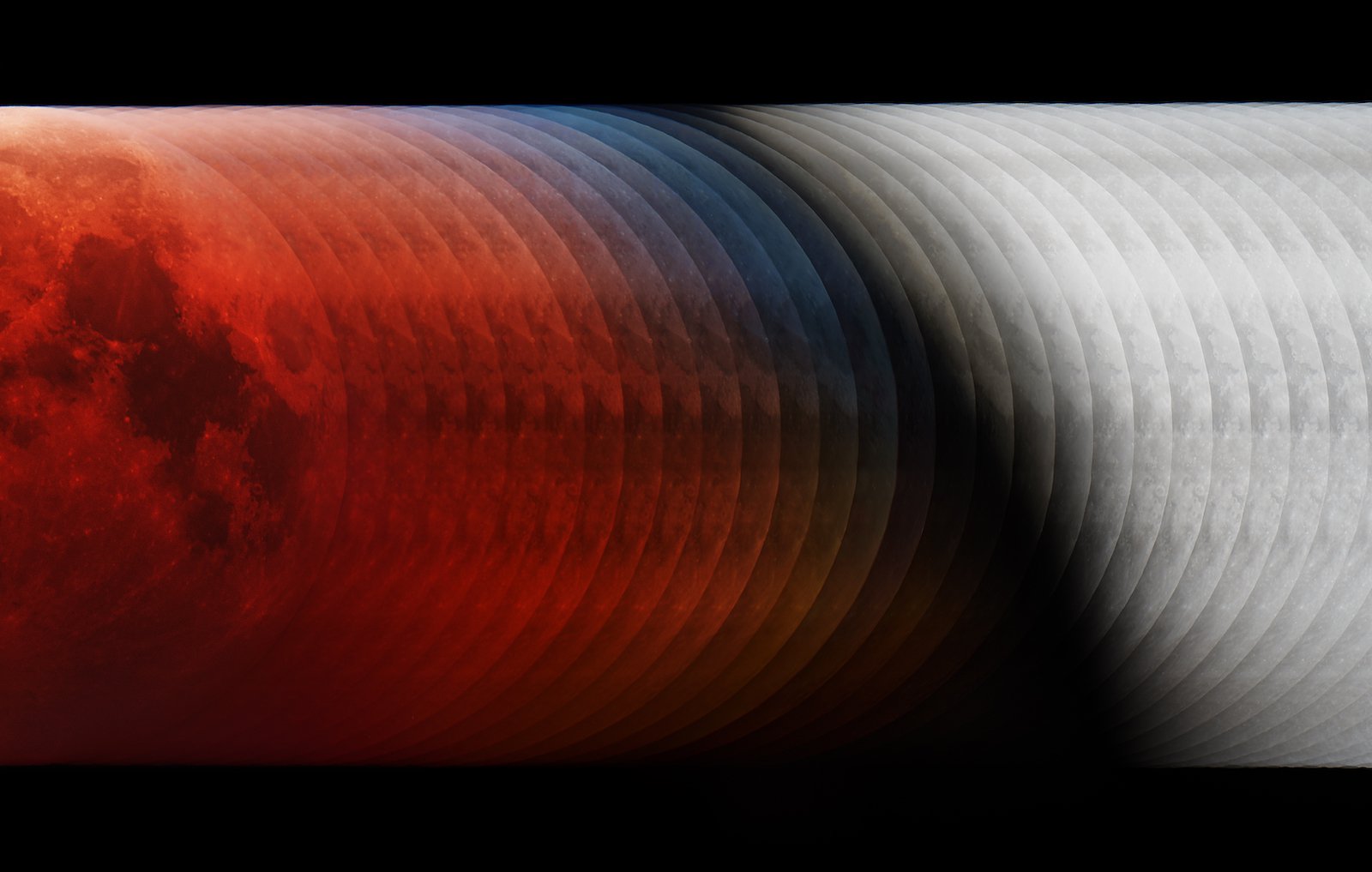
Description courtesy of the Royal Observatory Greenwich:
The phases were so close together that they blended perfectly in a continuous image that captured the shadow of the Earth. On the edge of the shadow appears a rare blue tint, the shadow of the Earth’s ozone layer. The sequences were taken with 3-minute gaps using a pre-programmed shutter remote. They were stacked onto each other using the faint background stars as a guide, so that the photographer could reveal the real orbit of the Moon.
Scroll down to see the rest of the category winners, and then head over to the Astronomy Photographer of the Year website to read more about each of the stunning photographs below:
Young Astronomy Photographer of the Year
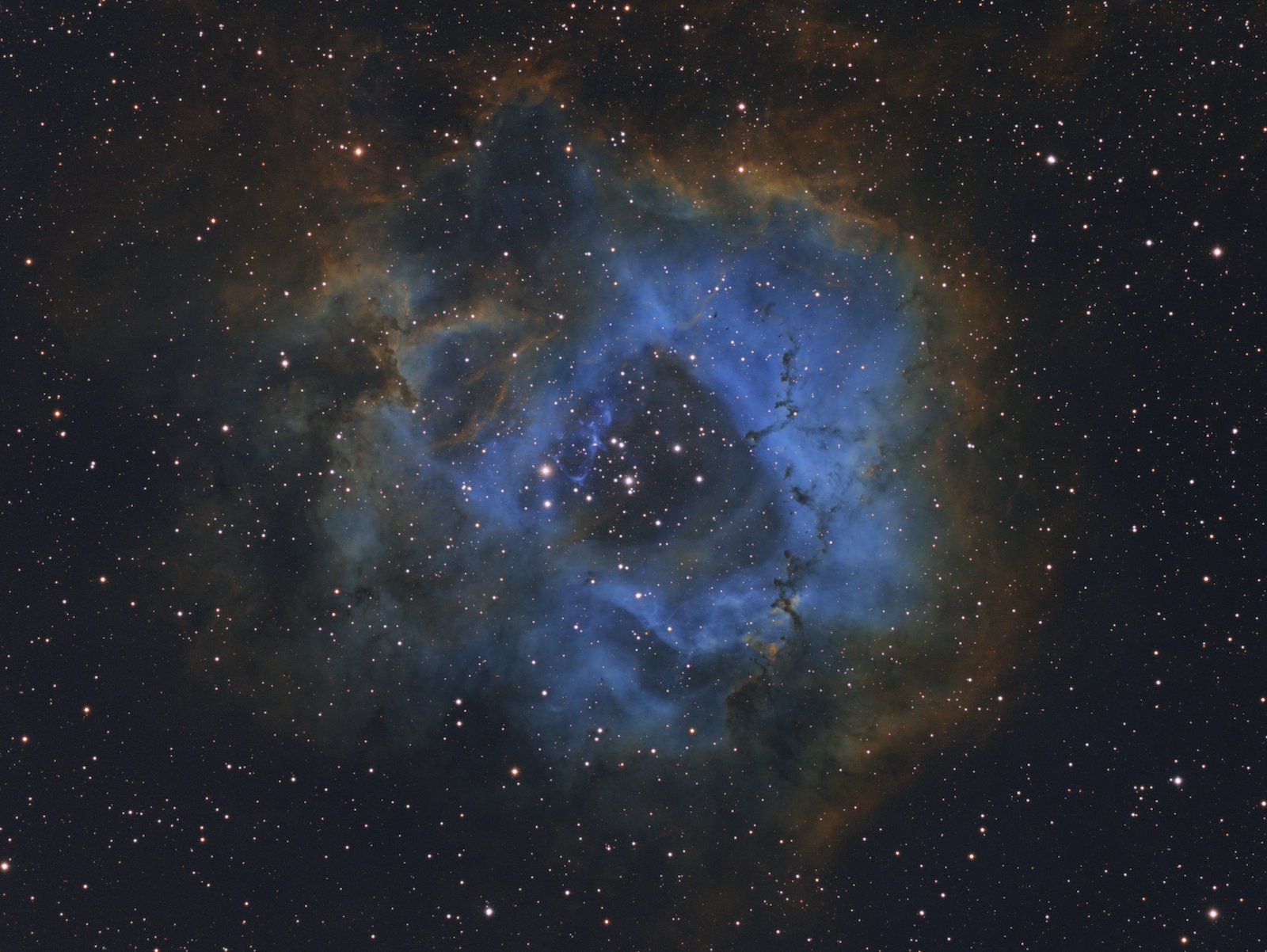
Once the photographer decided to capture a deep sky image, he started researching online for nebulae and came across the magnificent Rosette Nebula. With the help of his father he built the equipment and together, over three nights in November, captured images images of the Rosette Nebula using different filters. In order to familiarise with processing images, the young photographer practised on one of his father’s older photographs and then processed the raw data of this image by himself.
Hendrik-Ido-Ambacht, South Holland, Netherlands, 26 February 2019
Aurorae Winner
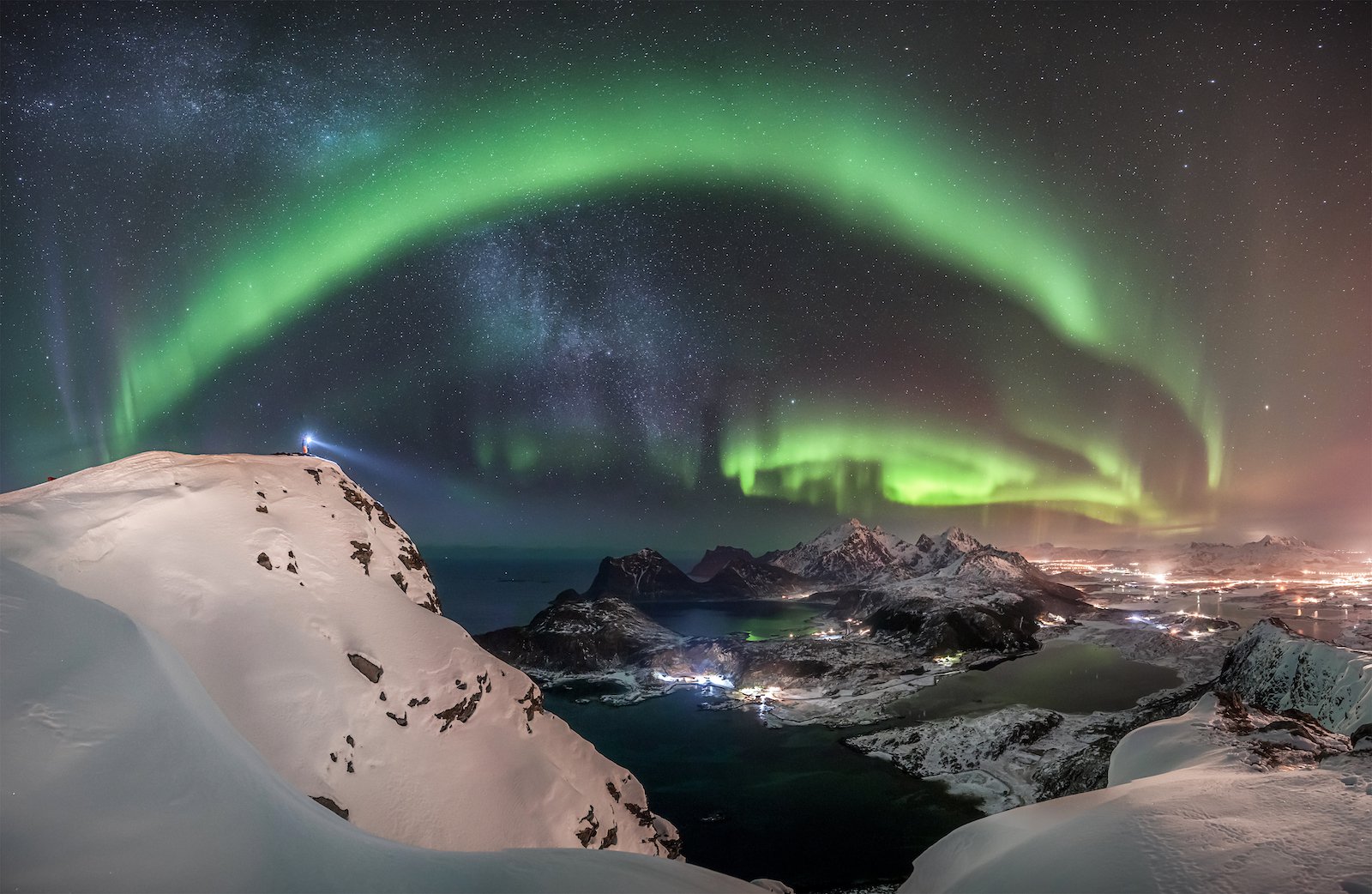
The photographer hiked in the snow to the top of the mountain Offersøykammen in Norway, to witness and capture the breathtaking giant aurora over the Lofoten Islands. He waited many hours and after midnight the bright Northern Lights finally appeared. The photographer shot this as a panorama to showcase the arched aurora over the mountains.
Lofoten, Norway, 9 March 2018
Galaxies Winner
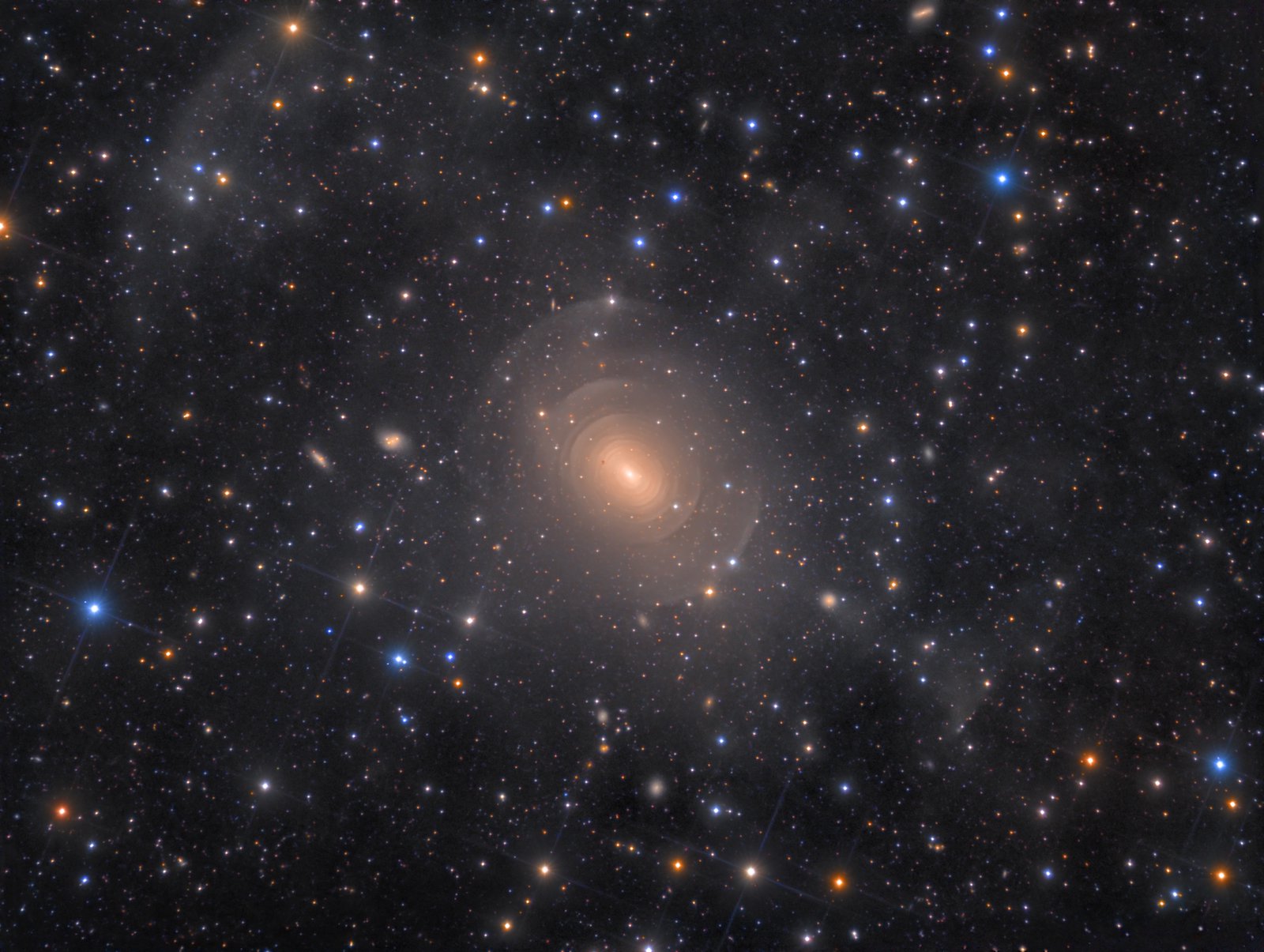
This is a deep image of the peculiar, elliptical galaxy NGC 3923. The galaxy features myriad concentric shells as a result of past mergers with other nearby galaxies. Recent research has documented 42 concentric shells in NGC 3923, more than in any other known galaxy. A prominent stream of stars extends towards the lower right, terminating abruptly in a shell-like fragment. Within the stream lies a small round galaxy believed to be one of the progenitors of the shell system. Now in the process of falling back towards the centre of NGC 3923, it shows a comet-like tail of stars extending behind it. Scattered throughout the field of view, far in the distant background, are numerous other galaxies. Some are even visible through the diffuse glow of NGC 3923. Many lie several billion light years away.
Auckland, New Zealand, 21 May 2017–25 March 2018
Our Sun Winner
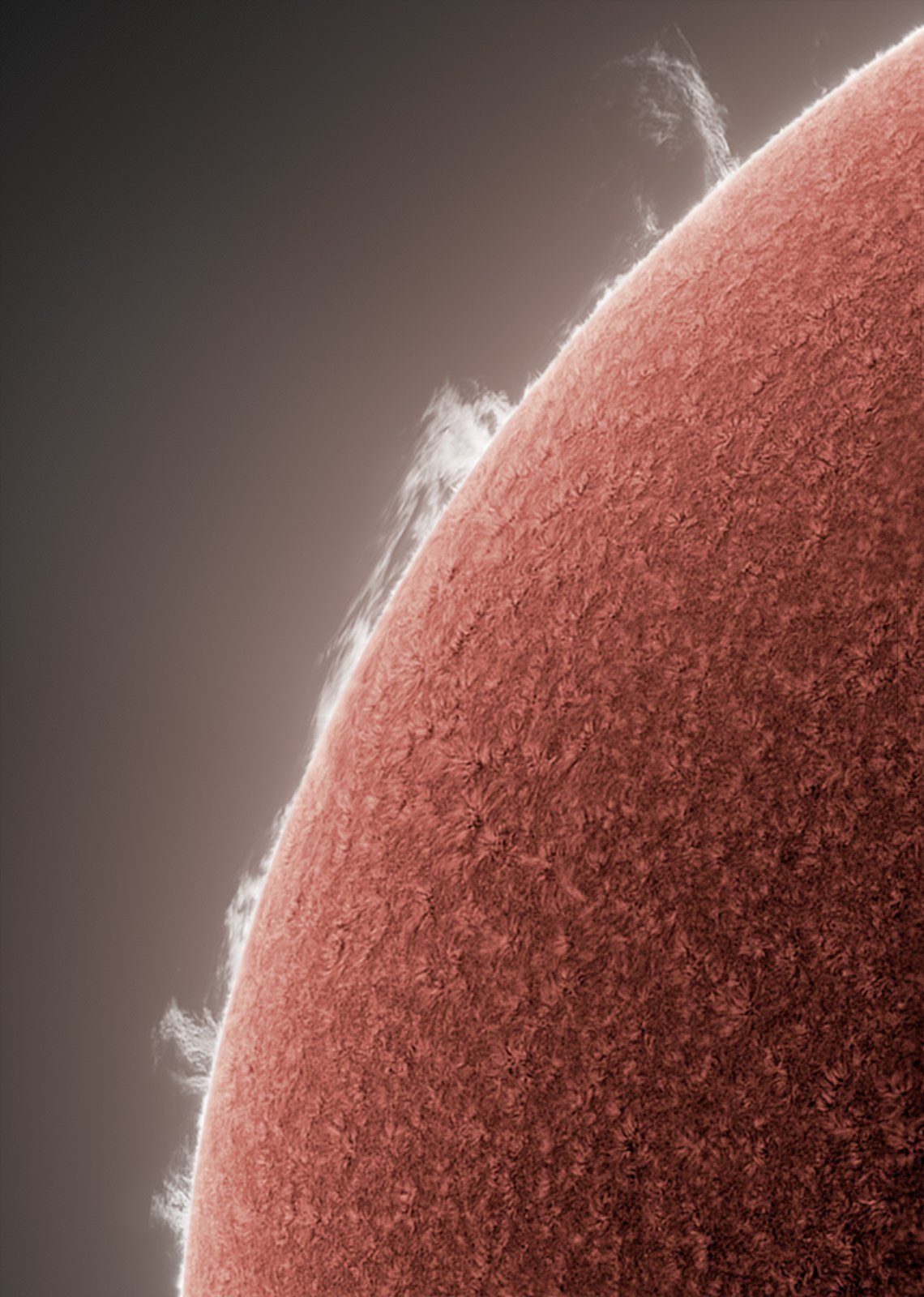
A close-up of the solar limb with what looks like fireworks in the solar minimum period of the Sun’s cycle. A group of prominences are silhouetted against the background of space. The tonality has been inverted to express depth and contrast of the features in the Sun’s chromosphere. The data, captured with a monochrome (black and white) camera, has been colourised.
Buffalo, New York, USA, 29 July 2018
People and Space Winner
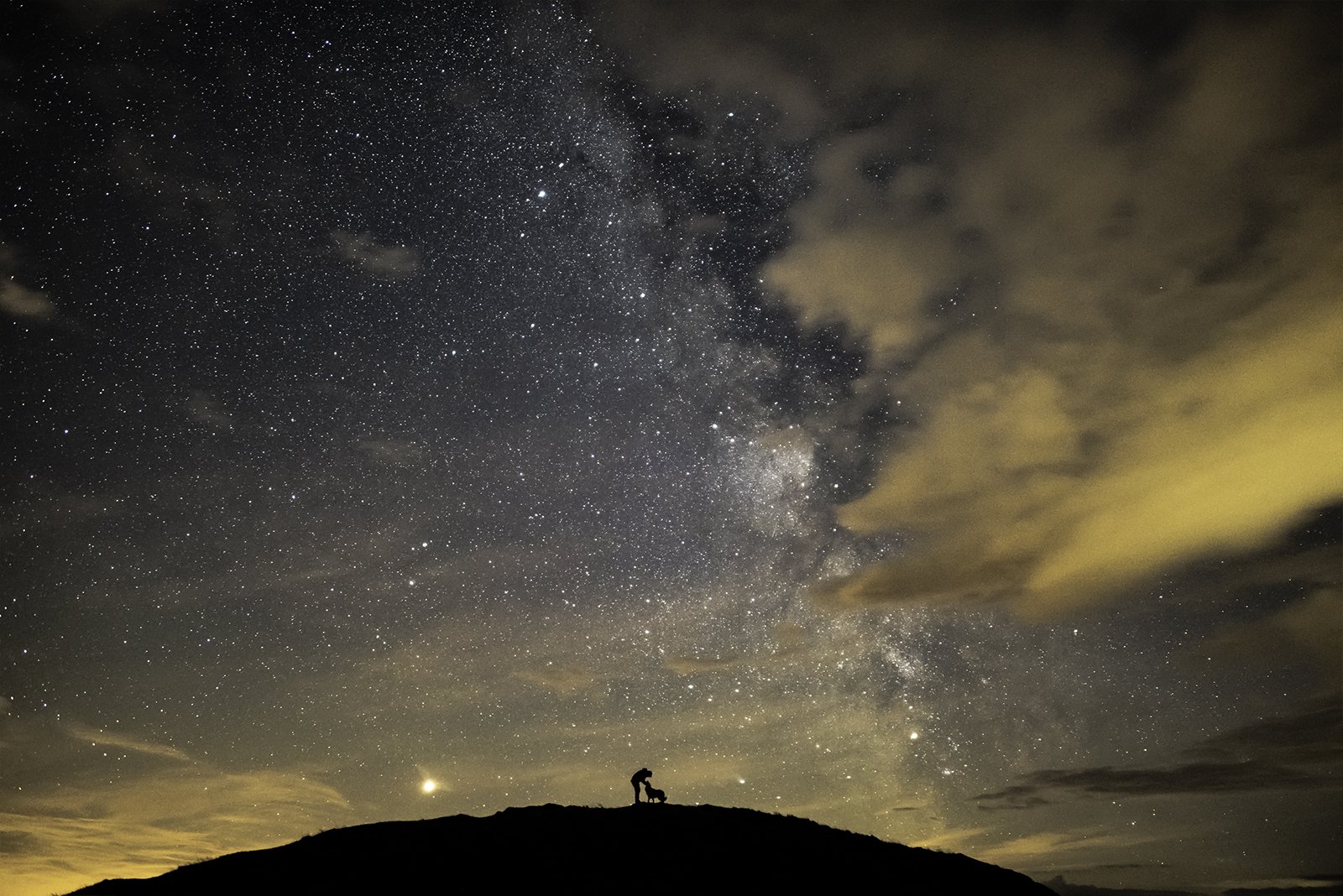
The image depicts the photographer and his dog, Floyd, surrounded by Mars, Saturn and the galactic core of the Milky Way galaxy. This photo encapsulates the photographer’s love for the cosmos. As his constant companions, the photographer often tries (and fails) to capture his dogs at night. With this shot the shutter speed was reduced to 10 seconds to allow to keep Floyd still. To counter this, the ISO was increased and the photographer whispered ‘don’t move, don’t move, don’t move’ to Floyd for the whole 10 seconds. The shot was repeated a number of times in order to capture a clear silhouette in a single exposure shot. The image contains everything the photographer loves about photography; the relationship with the landscape, family, dogs and friends.
Hadrian’s Wall, Hexham, UK, 9 August 2018
Planets, Comets and Astroids Winner
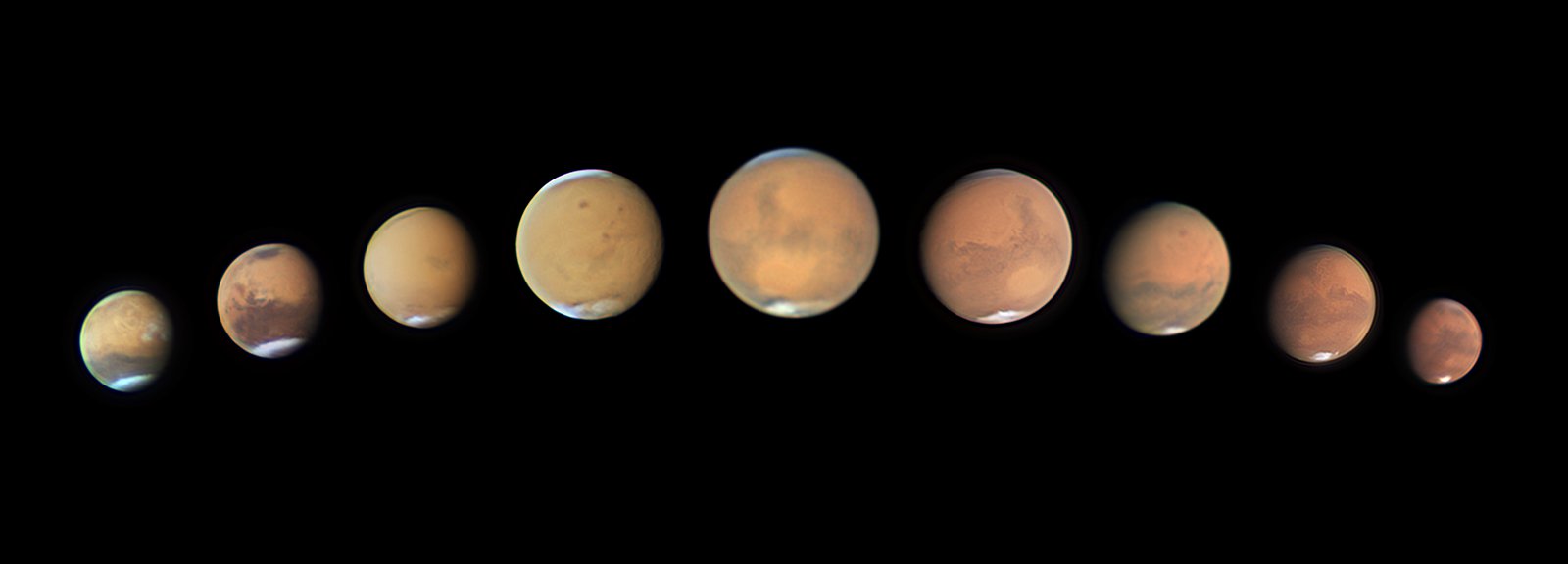
This is a sequence of images through the perihelic opposition of Mars in 2018 that follows the progress of the great global dust storm, which proved to be detrimental for the Opportunity Mars rover, which exceeded its planned lifespan by 14 years. The first frame (26 May) precedes the storm, with clouds on volcanoes in the Martian spring. The storm rapidly grew from regional to global coverage between 6 and 11 June (second and third frames), obscuring Opportunity, and only the Tharsis volcanoes were peeking out by 3 July. After a close July opposition, with features such as Syrtis Major only dimly visible through the dust, the usual darker albedo features returned as Mars disappeared into the distance again, while the south polar cap shrank into Martian summer.
Sydney, Australia, 26 May–30 October 2018
Robotic Scope Winner
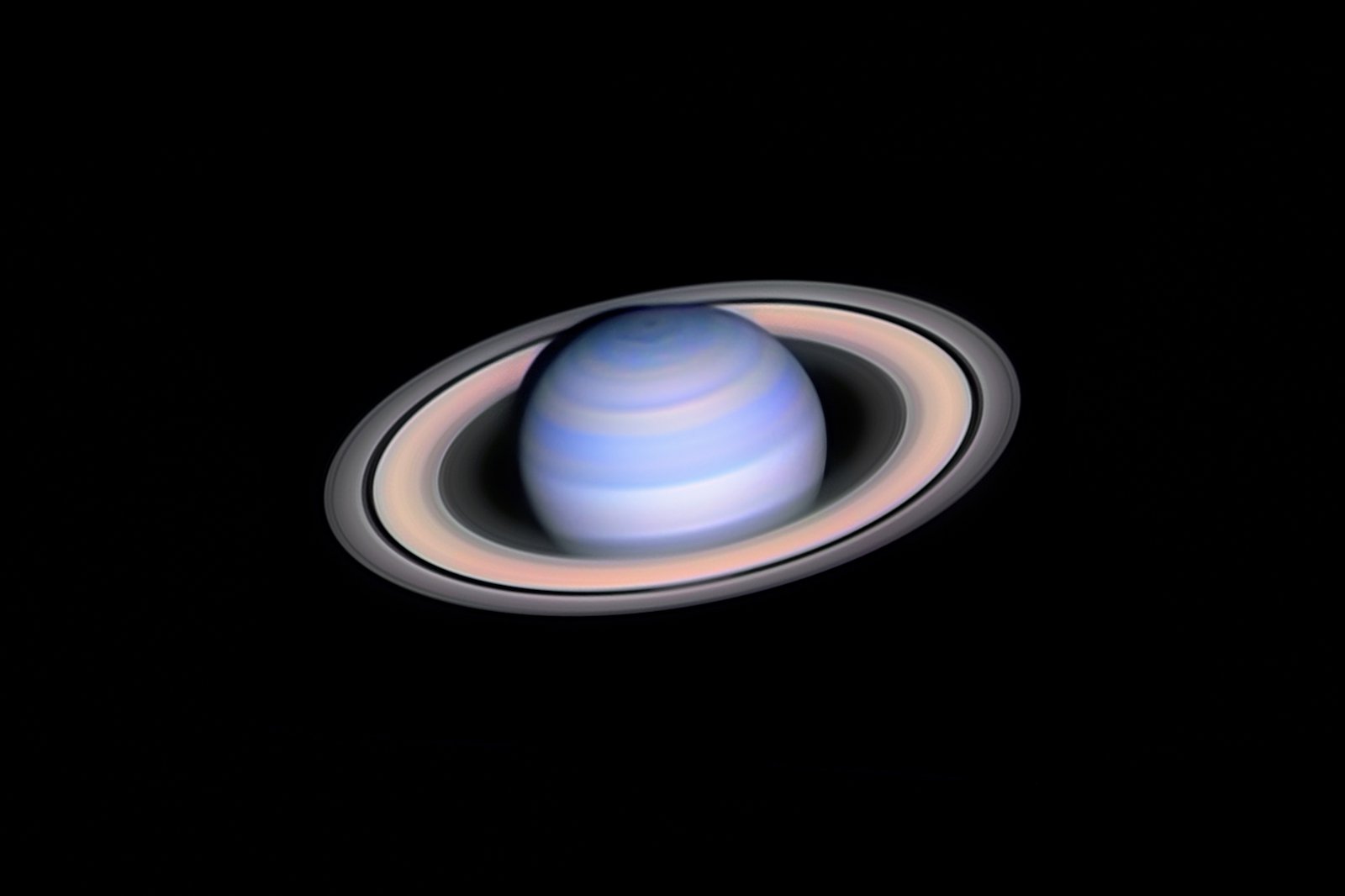
With this image, the photographer decided to take on the challenge of revealing the very near infrared colours of Saturn, using the combination of the red and other two infrared planetary filters, the IR 685 and the IR 742, respectively. These are usually taken using special infrared planetary filters, in order to reduce the perturbation effect of the atmosphere, and RGB filters, to show the visual appearance of the planet. This choice of filters meant the photographer could push the limits of amateur astrophotography a little further. In doing so, he managed to shift the spectral range of the coloured image with 0.4 microns (620–1150 nm) towards infrared.
Chilescope, Atacama region, Chile, 26 August 2018
Skyscapes Winner
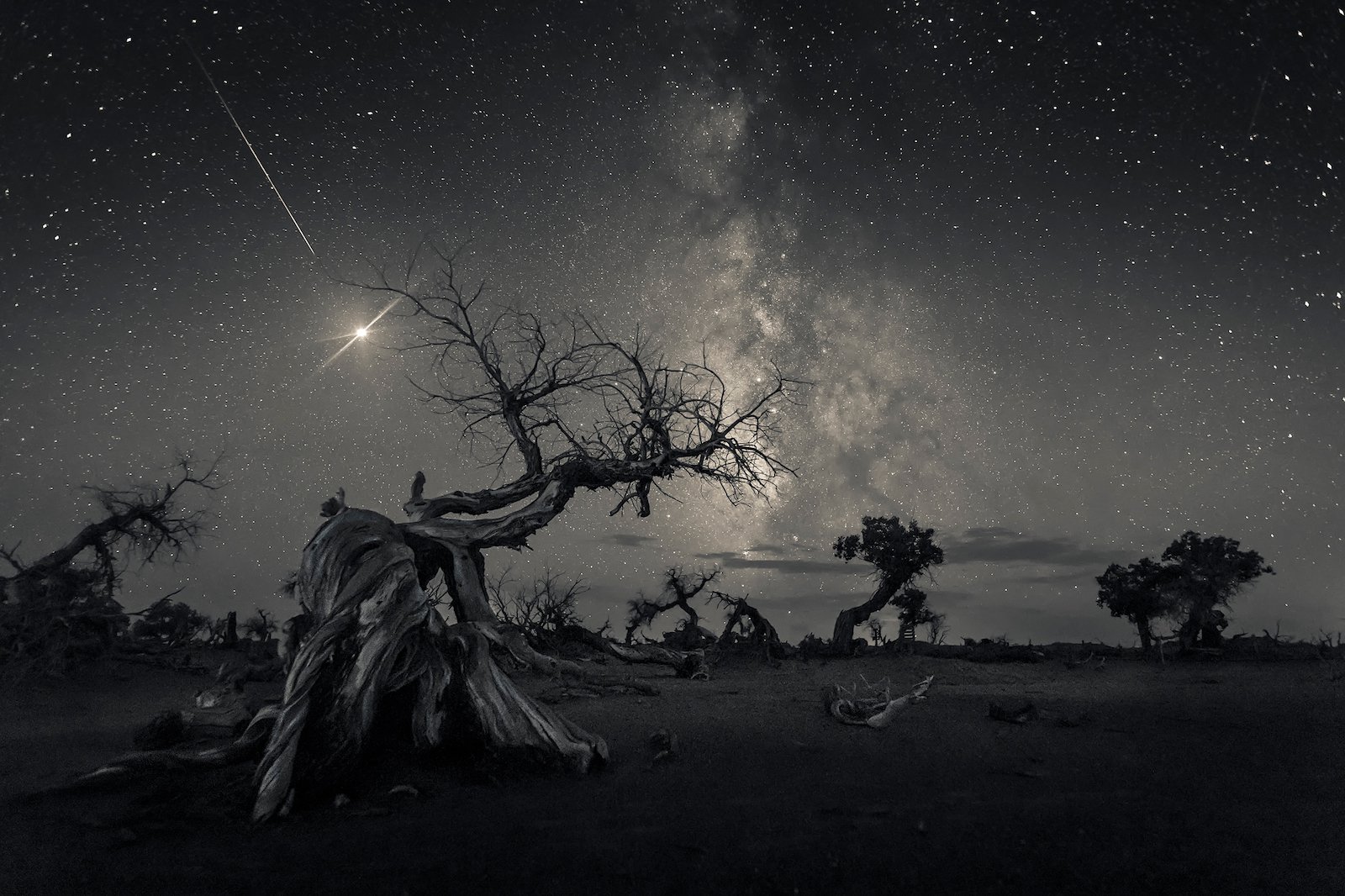
This mystical image of withered poplar trees was taken in the Mongolian region of Ejina, in the historical Kingdom of Xi Xia. The poplars’ resistance to erosion has led to an extraordinary formation of a desolate landscape and as a meteor falls, their shapes look like ancient creatures on an uninhabited desert.
Ejina, Inner Mongolia, China, 12 August 2018
Stars and Nebulae Winner
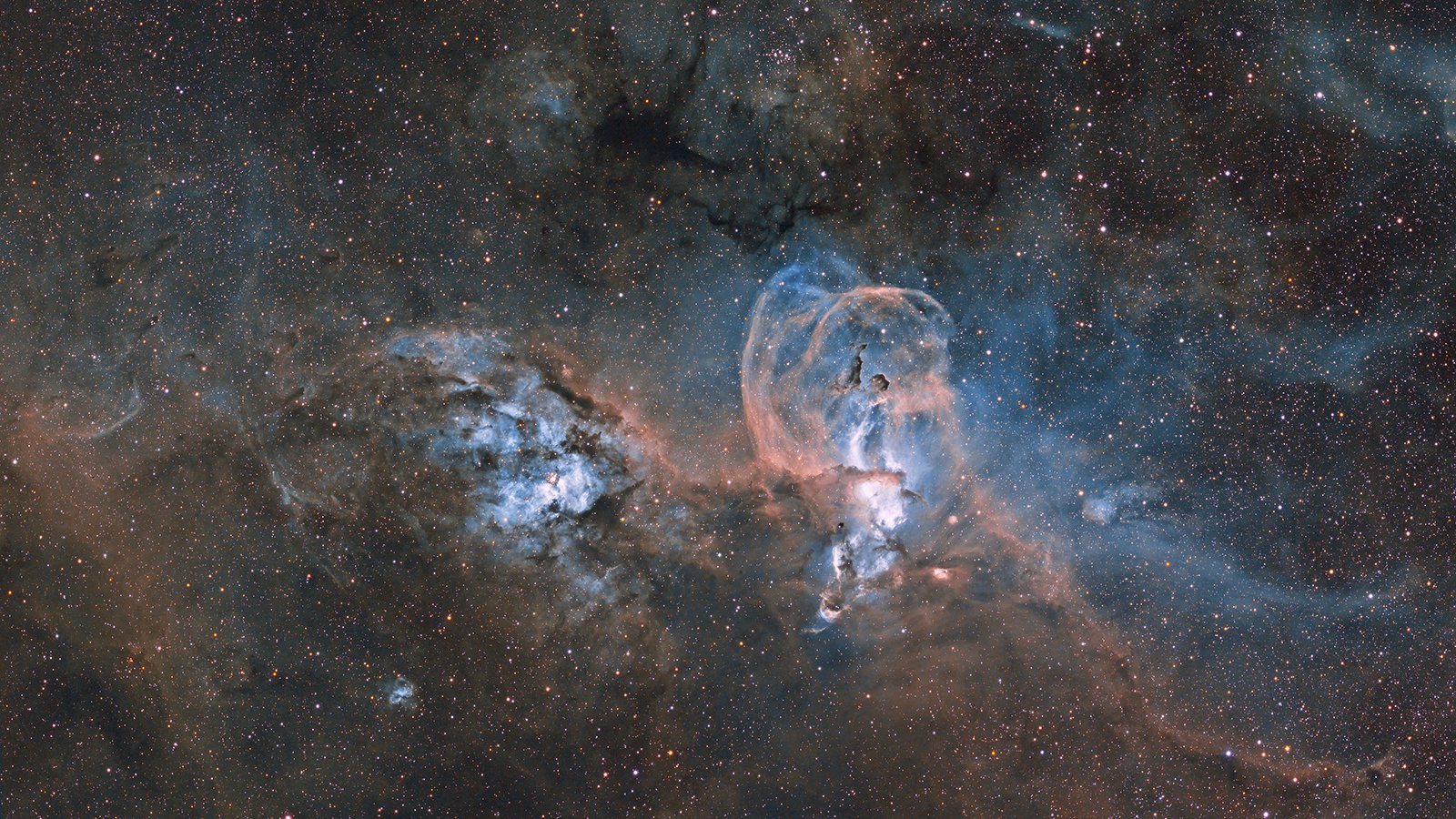
These are two nebula complexes, far apart from one another. The one on the right, NGC 3576, is closer to Earth, and its shape provides the title of this image. Both are active stellar nurseries, lit and shaped by the radiation from energetic young stars, showcasing a spectacular array of structures and colours. Acquired with narrow band filters, the composite image colour scheme follows the three-colour Hubble Palette standard.
General Pacheco, Buenos Aires, Argentina, 24 March 2018
Best Newcommers Prize
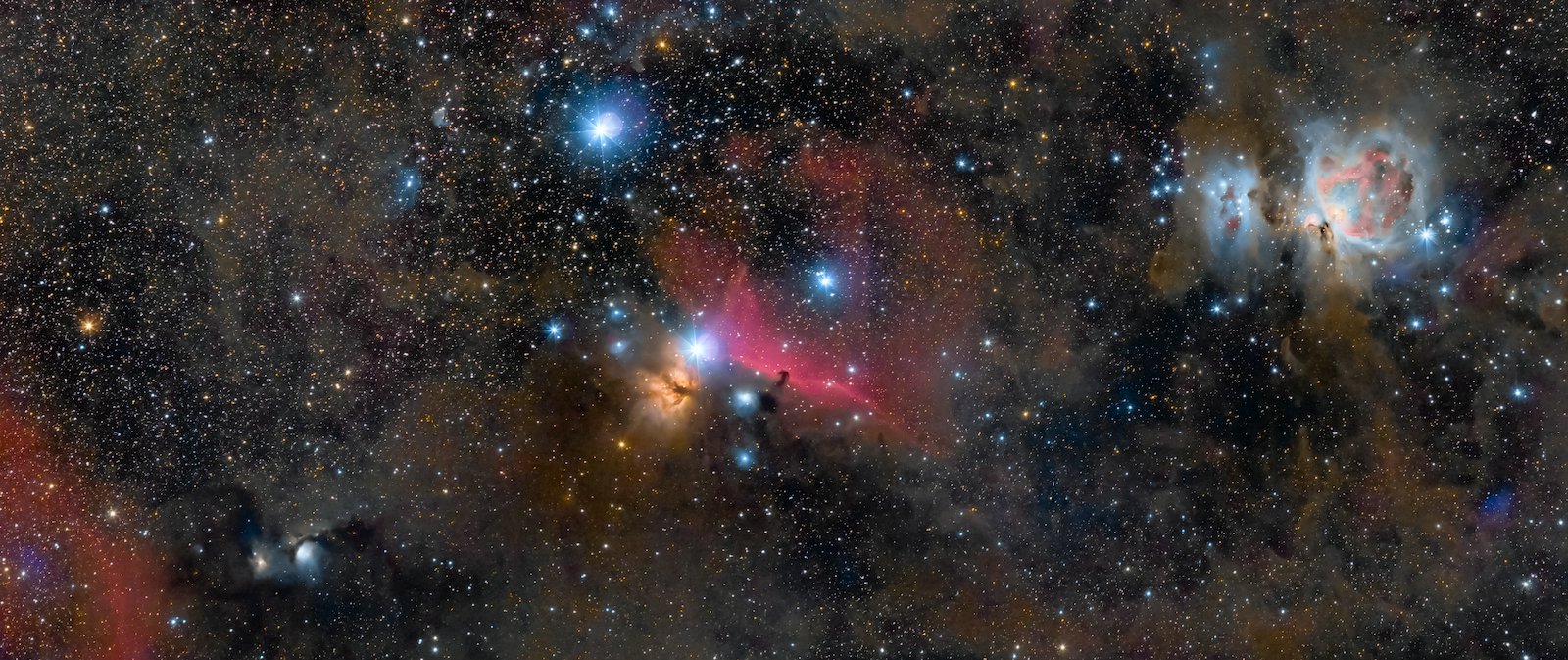
This is an image that the photographer wanted to capture since starting astrophotography in September 2018. This strip of the Orion constellation includes some of the best targets in the Northern Hemisphere. According to the photographer, the image shows what can be done with a pretty average DSLR camera and a lens and is hopefully an inspiration to those who have some photography kit already and want to get started. The image is a mosaic of two panes at 200 mm. Both panes were stacked in PixInsight, and have same basic early processing of gradient removal and colour calibration. Both images were then transferred and stitched together in Photoshop with further work done to reduce noise, bring out the dust and control the stars’ size and colour.
Embleton, Northumberland, UK, 30 January 2019
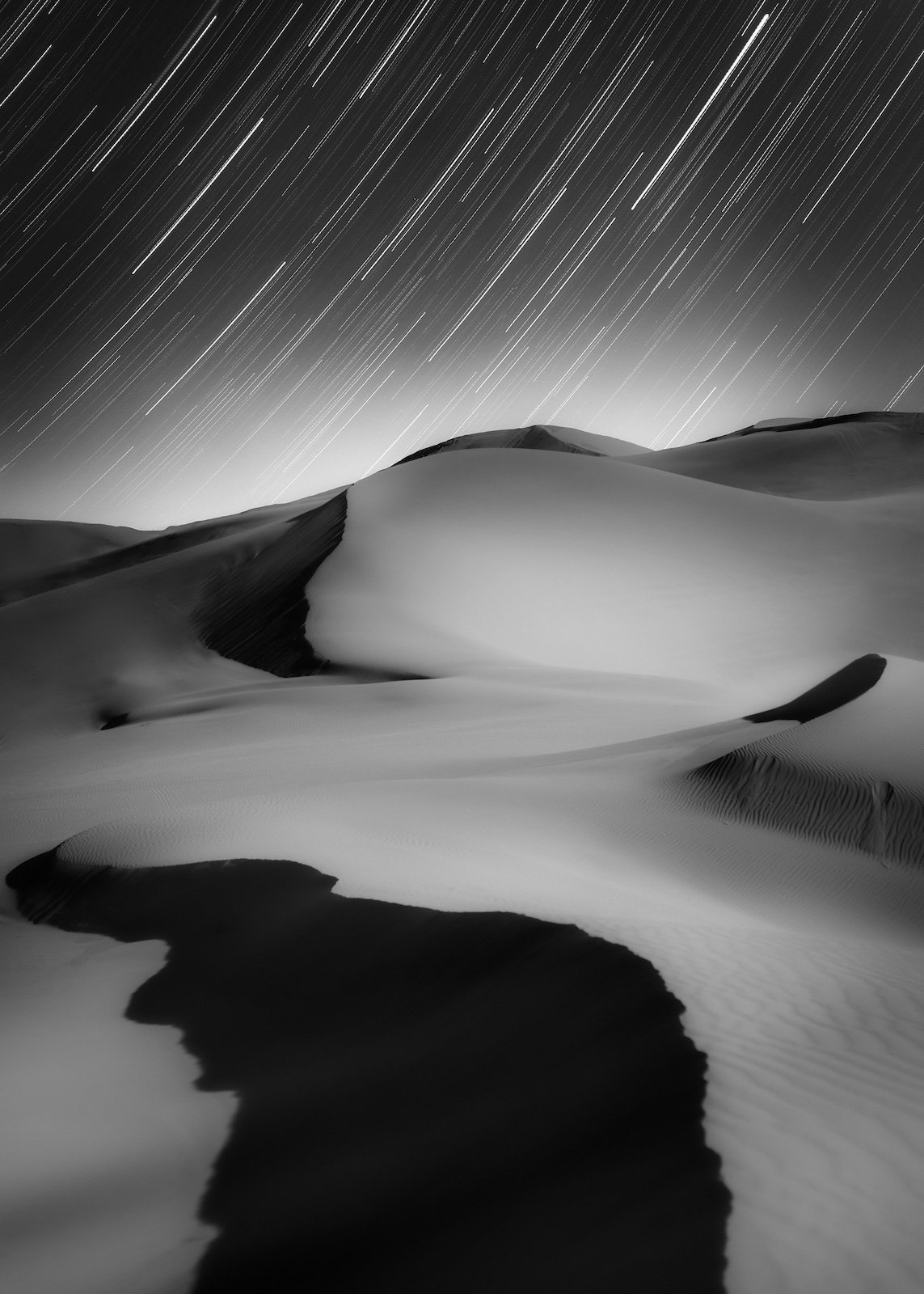
The Moon was shining bright over the sand dunes in north-central China, when the photographer decided to capture this image with a friend. After enjoying a sunset and the rise of the Moon, they began to take photos of the magnificent starry sky.
Ningxia, China, 25 July 2018
The winning images, runner-ups, and highly-commended images will be showcased alongside a selection of 68 shortlisted images in a special Astronomy Photographer of the Year exhibition at the National Maritime Museum, which opened to the public today.
Congratulations to all of the extremely talented commended photographers.
Credits: All photos used courtesy of the Royal Observatory Greenwich.





